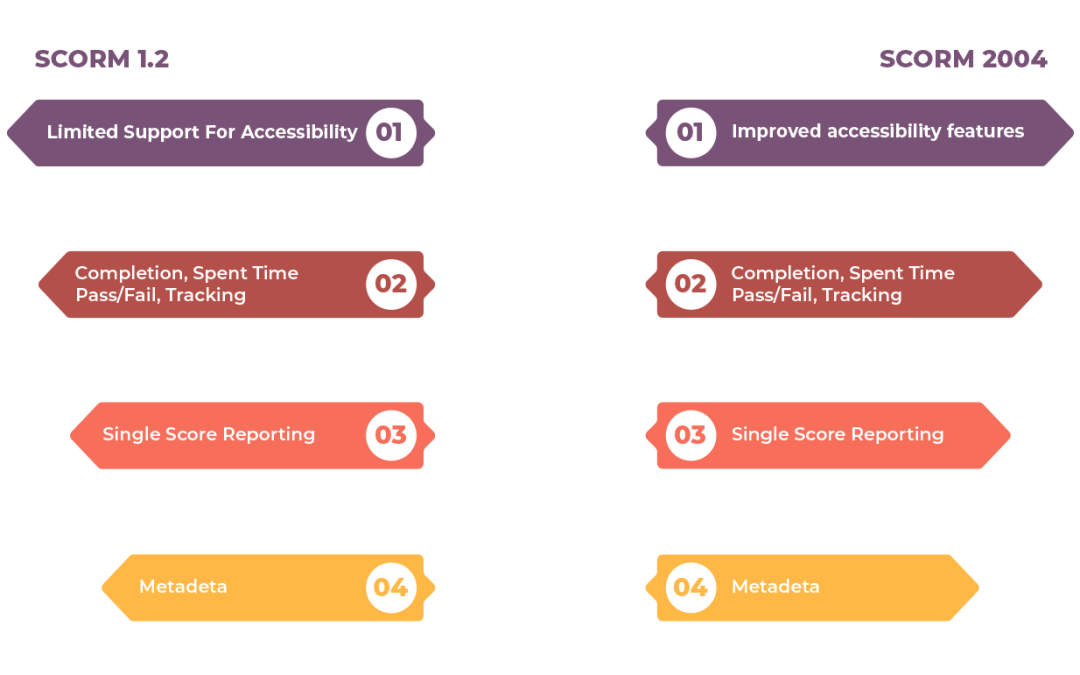SCORM, or Sharable Content Object Reference Model, is a set of technical standards and guidelines for creating and delivering e-learning content. There are two main versions of SCORM currently in use: SCORM 1.2 and SCORM 2004. While both versions share many similarities, several key differences are important to understand.
SCORM 1.2
SCORM 1.2 was released in 2001 and remains the most widely used version of SCORM today. It consists of specifications and guidelines for creating and packaging e-learning content and a run-time environment for delivering that content and tracking learner progress. Some of the key features of SCORM 1.2 include
- A simple, HTML-based content packaging format
- A run-time environment that allows content to communicate with the LMS via a JavaScript API
- A data model that defines a standard set of learner interactions, such as completion status and score
- Basic sequencing and navigation functionality
SCORM 2004
SCORM 2004, also known as SCORM 1.3, was released in 2004 as an update to SCORM 1.2. It includes many specifications and guidelines as SCORM 1.2 but with several significant enhancements. Some of the key features of SCORM 2004 include:
- An XML-based content packaging format that allows for greater customization and flexibility
- An enhanced run-time environment that allows for better communication and interaction between content and the LMS
- A more flexible data model that allows for more detailed tracking and reporting of learner progress
- Advanced sequencing and navigation functionality that allows for more sophisticated adaptive learning
Technical Differences
While both versions of SCORM share many similarities, several key technical differences exist between them. Some of the most significant differences include:
| Aspect | SCORM 1.2 | SCORM 2004 |
| Content Packaging | Simple HTML-based format | Flexible XML-based format |
| Run-Time Environment | Communicates via JavaScript API | Uses web services and more advanced data exchange protocols |
| Data Model | Standard set of interactions with limited customization options | More flexible data model with greater customization options |
| Sequencing and Navigation | Basic sequencing and navigation functionality | Advanced sequencing and navigation with support for adaptive learning |
The Takeaway
In conclusion, SCORM 1.2 and SCORM 2004 are widely used e-learning standards that provide a set of specifications and guidelines for creating and delivering e-learning content. While SCORM 1.2 remains the most widely used version, SCORM 2004 offers several key advantages regarding content packaging, run-time environment, data model, sequencing, and navigation. When deciding which version of SCORM to use, it is important to consider the specific needs and requirements of your e-learning application and choose the version that best meets those needs.

